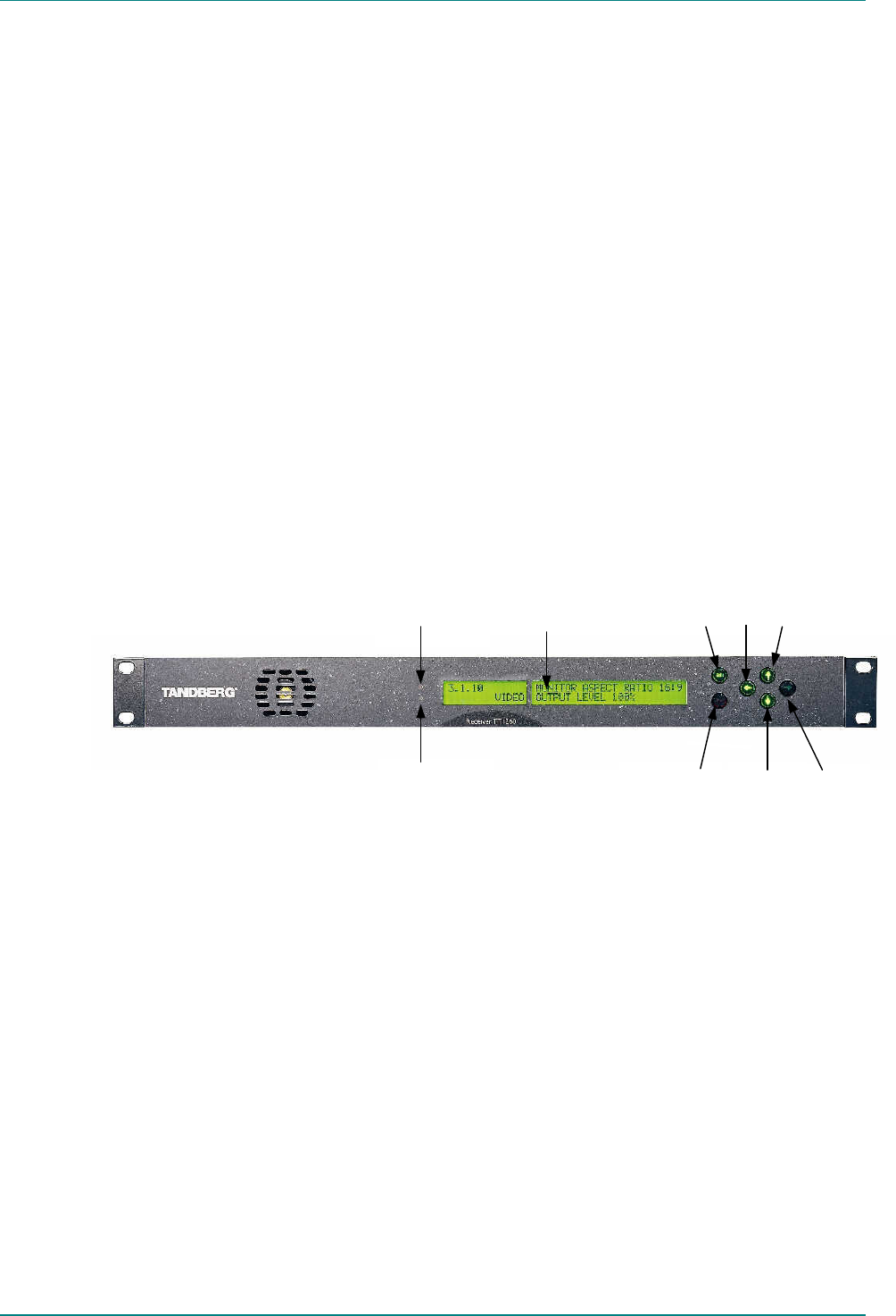
Introduction
Page 1-16 Instruction Manual: TT1260 Standard Definition Professional Receiver/Decoder
ST.TM.E10100.1
1.6 Guided Tour
1.6.1 Construction
The TT1260 is constructed using a screened self-ventilated modular
system; all operational inputs and outputs are via rear-panel connectors.
The unit may be operated freestanding or mounted in a 19-inch rack.
1.6.2 Front Panel Controls
The physical interface for the Front Panel consists of an alphanumeric LCD
display, pushbuttons, and status LEDs that are used to set up and monitor
the unit. The general layout is shown in Figure 1.9. Information on the use
of these controls is given in Chapter 3, Operating the Equipment Locally.
User input is via six pushbuttons comprising four cursor pushbuttons:
LEFT, RIGHT, UP, and DOWN; and two edit control pushbuttons: EDIT
and SAVE.
Each pushbutton has an integral green LED except SAVE, which has an
integral red LED. When lit these LEDs indicate to the user which
pushbutton is currently active.
Automatic repeat following an initial delay period is implemented for the
LEFT, RIGHT, UP and DOWN pushbuttons in software.
Figure 1.9: Front Panel Controls
1.6.3 Front Panel LEDs
Figure 1.9 shows the location of the LEDs on the front panel. The LEDs
indicate the equipment status as follows:
The red ALARM LED is used to indicate an IRD fault condition, e.g. a
missing or faulty input signal. It should be off for correct operation,
although it may be lit briefly during power-up.
The green LOCK LED is used to indicate that the IRD is locked to a
transport stream when lit, and indicates correct conditions and correct
system functioning.
1.6.4 Bit Error Ratio Measurement
Bit Error Ratio (BER) measurement is done by an LCD display
representation. See the QPSK Satellite menu (Section C.5, Input Status
Menu).
Alarm LED
Lock LED
LCD display
Save
Edit Up
Down
Left
Right


















